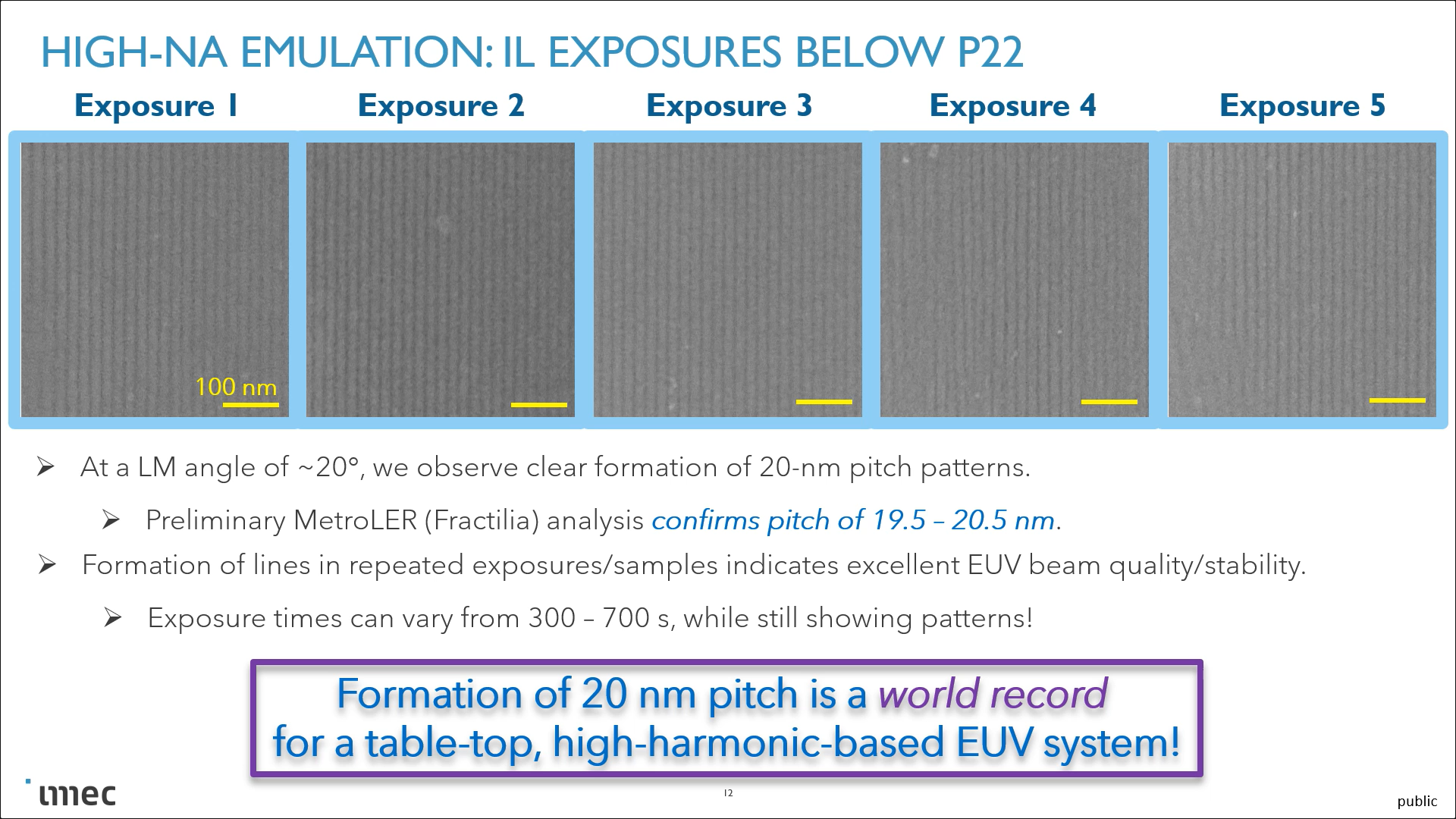 Imec, a world leader in nanoelectronics and digital technologies, reported using KMLabs' 13.5 nm XUUS high harmonic generation source for printing 20nm pitch line/spaces using interference lithographic imaging of an Inpria metal-oxide resist under high-numerical-aperture (high-NA) conditions for the first time.
Imec, a world leader in nanoelectronics and digital technologies, reported using KMLabs' 13.5 nm XUUS high harmonic generation source for printing 20nm pitch line/spaces using interference lithographic imaging of an Inpria metal-oxide resist under high-numerical-aperture (high-NA) conditions for the first time.
Update on 3/2/2021: the image shown is a slide from a recent SPIE presentation by Dr. Kevin Dorney on 2/22/2021 titled "Lloyd’s mirror interference lithography below a 22-nm pitch with an accessible, tabletop, 13.5 nm high-harmonic EUV source."
Presentation link here: https://www.spiedigitallibrary.org/conference-proceedings-of-spie/11610/2595048/Lloyds-mirror-interference-lithography-below-a-22-nm-pitch-with/10.1117/12.2595048.full
Another relevant presentation on 2/22/2021,
This demonstrated high-NA capabilities of EUV interference lithography using 13.5nm XUUS represents an important milestone of the Attolab, a collaborative research facility initiated by imec and KMLabs.
[Below is quoted from imec's press release on 2/9/2021]
The high-NA exposure at 13.5nm was emulated with a coherent high-flux laser source of KMLabs in a Lloyd’s-Mirror-based interference setup for coupon experiments on imec’s spectroscopy beamline.
“The high-flux laser source of KMLabs was used at a record small wavelength of 13.5nm, emitting a series of attosecond (10-18s) pulses that reaches the photoresist with a pulse duration that is a few femtoseconds (10-15s) in width. This imposed challenging requirements on the temporal coherence of the interfering waves,” explains John Petersen, Principal Scientist at imec and SPIE Fellow. “The demonstrated capability of this setup for emulating high-NA EUV lithography exposures is an important AttoLab milestone. It demonstrates that we can synchronize femtosecond wide pulses, that we have excellent vibration control, and excellent beam pointing stability. The 13.5nm femtosecond enveloped attosecond laser pulses allow us to study EUV photon absorption and ultrafast radiative processes that are subsequently induced in the photoresist material. For these studies, we will couple the beamline with spectroscopy techniques, such as time-resolved infrared and photoelectron spectroscopy, that we earlier installed within the laboratory facility.
The interference tool will be used to explore the fundamental dynamics of photoresist imaging and provide patterned 300 mm wafers for process development before the first 0.55 high-NA EXE5000 prototype from ASML becomes available.
Read imec's full press release here,



